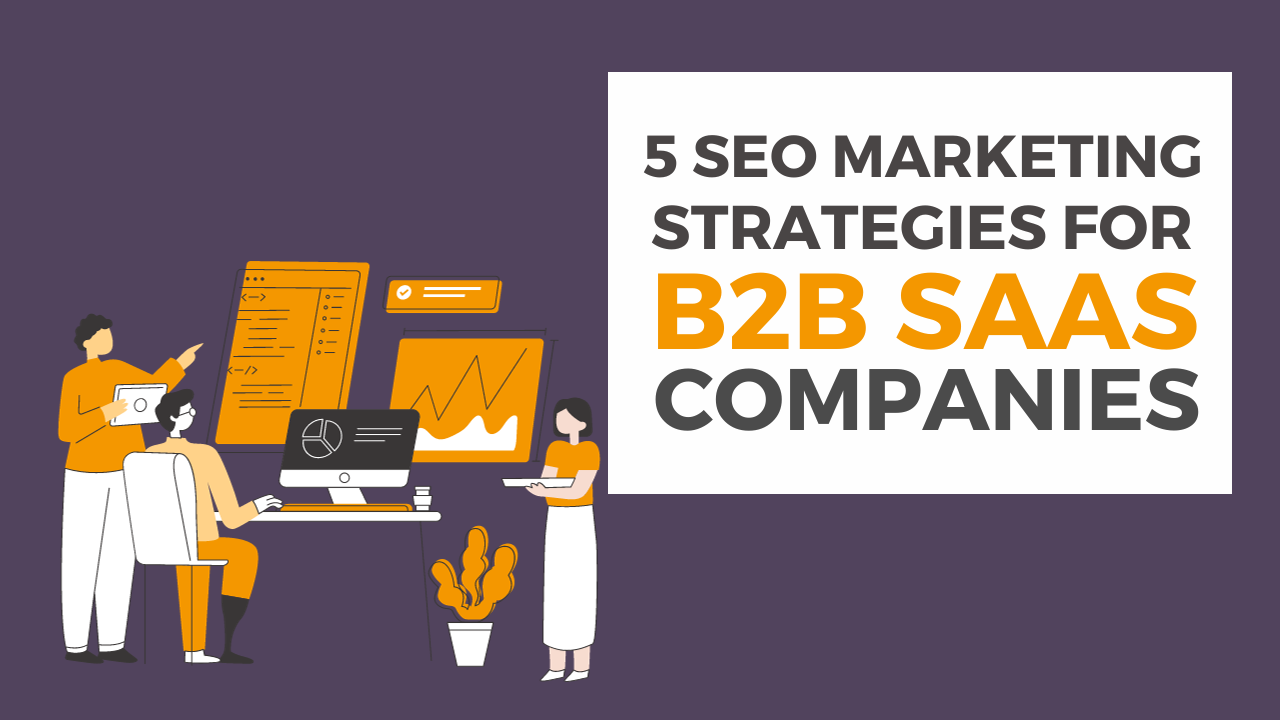The rules of SEO have changed. So if you want your business to climb the rankings, what are the new strategies that can help?
In this post, we’ll look at why the landscape looks so different, and explore five strategies that can make a big difference to the SEO success of your SaaS company.
SEO used to be (relatively) simple. Wanted to climb the Google rankings? Easy. Do the essential housekeeping (a sound website, no broken links etc), produce some ‘how to’ or listicle-type content, pepper it with some well-researched search engine-friendly phrases and bingo: you’re on your way to somewhere close to the top of page one, happily collecting the clicks.
But then SEO changed. The steps that saw you successfully climbing the rankings a few years ago will no longer be enough to deliver the same results. And yet, every company still wants to rank highly for its services.
So what SEO strategies should a SaaS company be using today?
What happened to SEO?
Three major developments have, in combination, very much changed the SEO landscape. They are:
AI
Good content has always been central to a successful SEO strategy. It still is. But good (or at least, decent) content has never been easier to create thanks to Chat GPT and its numerous clones.
Search engine rankings always looked for authority. They still look for helpfulness (about which more in a minute). But ranking one thing against another relies on difference and when everyone’s using AI-generated content it all starts to look very similar.
So a general uptick in the quality of content — something Google has been urging businesses to do for years — has created the weird situation where it’s not always helping SEO rankings.
Google has adjusted its approach to content. It’s now ok with AI (subject to the issue above). But it isn’t ok with content that doesn’t add anything to the knowledge pool. Of all its criteria, perhaps the most notable is “Is this the sort of page you’d want to bookmark, share with a friend, or recommend?”
So content that is rehashed, re-spun and repurposed won’t fit the bill. Nor will click-bait-y, sensationalist headlines that can’t follow up on their promise. Nor will content that is sloppy. And Google has a real problem with mass-produced content.
Content was always vital to SEO, but much of that content was intellectual landfill. That won’t wash anymore.
Everyone else
Competition was always the underpinning element of SEO. Yet when everyone is optimising, ranking gets much harder. Show us the SaaS company that isn’t optimising and we’ll show you … actually we won’t show you anything because we won’t be able to find them on Google.
Every SaaS company is optimising. There are differences of approach, differences of nuance, differences in terms of content quality, site quality and, yes, SEO quality. But we’re a long way past the point when the quality of your link building could make all the difference to an SEO campaign.
So if the old strategies are now either ineffective or, at best, just the foundations for something more, what should SEO marketing strategies for SaaS companies look like now?
Essential SEO Marketing Strategies for B2B SaaS Companies
1. Get the basics right
You won’t buy your next car because it has wheels, but they still come in pretty handy. In the same way, the basics of site performance (missing or duplicated title tags, multiple HI tags, broken links, outdated content etc) still matter. They just matter a little less on the basis that:
- Most SaaS organisations are already employing SEO practitioners who should be completely on top of this stuff; and
- Other elements have grown in importance (see below)
Think of them as hygiene factors. No search engine will reward you greatly for getting them right, but you will be penalised for not doing them.
2. Create expert opinion
Here’s the answer to the content problem. Let’s suppose your SaaS company has developed an online platform for hospitality businesses that puts bookings, stock ordering, staffing and reviews all in one place.
AI can pull together a perfectly effective series of articles along the lines of ‘5 ways to improve reviews’ or ‘5 ways to get your restaurant staffing right’.
What it can’t do is form opinions about that. It can’t deliver thought leadership because, almost by definition, current AI is a follower. It can’t challenge industry conventions. It can’t tell the world what you are thinking or feeling. Only you can do that.
This does make creating content harder. It requires greater investment in time and money. You may need to work with a content writer who can carry out interviews with key people and then turn those thoughts into something valuable.
But it does mean you’re saying something that no one else is. Because no one else can. Google likes that.
3. Take SEO out of its silo
Customers don’t stick to channels. They see an ad on social media, check the website to see the product in greater detail. Then they may visit a store to test or try a product. Then they head back online to buy.
So if your SEO is ploughing its own, old-fashioned furrow, head down and pretending the rest of the world doesn’t exist, it’s optimising for a world that no longer exists.
SEO has to take the digital omni-channel approach. It’s not enough to optimise your SaaS product in isolation. The most successful SEO strategies now capitalise on the synergies between SEO, content marketing, pay-per-click, social media ads, marketing automation and more, ensuring that, for example, the pain points we explore below are carried across every channel, so the customer sees a joined up, consistent approach that operates across the touchpoints required to get its message across.
4. Address consumer pain points
SEO has often had a habit of creating content to feed itself. It didn’t exist for anyone’s benefit. It was simply a vehicle on which to hang some keyphrases you wanted to optimise for.
Frustratingly for anyone who’s ever reached the end of a web page and thought ‘well that told me absolutely nothing,’ it was an approach that could be pretty successful. But not anymore.
Now, content needs to be helpful. And customers are likely to be most grateful when that help comes in the form of addressing a pain point they’ve been struggling with.
How do you know what your customers’ pain points are? You could ask them. Focus groups, surveys and interviews can produce valuable insights. But as a shortcut, we’d always suggest asking the customer service team, because they’ll be dealing with the things that really drive customers mad, every day.
5. Prioritise what really matters
If you’ve ever attempted to optimise a website yourself, you might have used software to help. There’s nothing wrong with that — we use software to help us find issues that need fixing. But when the audit reveals 100+ faults, there’s a heart-sinking moment when you think a) you’ll never have the time to do everything and b) you wouldn’t know how.
In truth, there’s always been too much to do from an SEO perspective. No SEO company is doing absolutely everything they could be doing, partly because there aren’t enough hours in the day, but also because you don’t need to do everything.
The key is knowing which parts to address, and that requires knowing the things that really matter from the things that are nice-to-haves.
Which is, fortunately, why it still pays to have an SEO specialist on your team.
Revisit your SaaS SEO Marketing Strategy
If you’re doing what you always did and getting diminishing results, it’s time to revising your SaaS business’ SEO strategies because things have changed, and your SEO needs to change too. We can help. Get in touch.
Related Articles:
B2B SaaS Inbound Marketing: Strategies That Convert
Mastering B2B SaaS Lead Generation: 7 Strategies That Work




